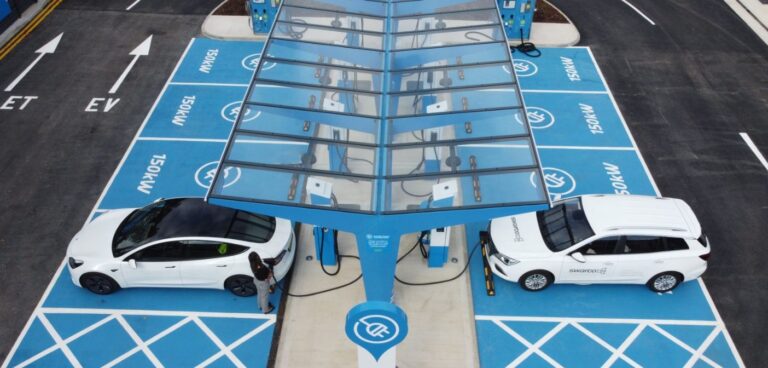Zap-Map, a UK-based electric vehicle chargepoint mapping service, has published year-end figures for 2022, which show an almost 80% growth in the number of ultra-rapid chargepoint installations.
Zap-Map highlighted the growth of ultra-rapid chargers (maximum 350kW) across the nation this year as 2022’s ‘defining characteristic’. Other key points were growth in the West Midlands and improved provision of on-street chargers.
The company also pointed to record electric car sales in December—which saw more than 42,000 pure-electric cars sold— meaning that total sales of petrol cars was lower than that of EVs for the first time.
As of the end of December 2022, Zap-Map reports that installations of ultra-rapid chargepoints grew by almost 80% (78%) in 2022, with the number of high-speed devices growing from 1,290 at the end of 2021 to 2,295 in 2022.
As the popularity of all-electric cars grows, the provision of charging infrastructure needs to keep pace to support an increased number of EVs on the road. With the number of electric cars on the road increasing by 40% in 2022, the number of ultra-rapid chargers is more than keeping pace, according to Zap-Map’s statistics.
Installations of fast chargers (max. 22kW) climbed by 34% in 2022, falling slightly short of the rate of electric car sales.
However, slow chargers (max. 6KW) saw only a 23% increase during the past 12 months, with rapid chargers (max. 99kW) closely following this figure with 19% growth. This means installations of fast, slow and rapid EV chargers are failing to match the purchase rate of electric cars in the UK.

A range of networks have been rolling out high-speed charging hubs of around six devices, or more, across the country, which Zap-Map credits with the growth of ultra-rapid infrastructure.
In total, the UK saw 106 new high-speed charging hubs of four or more rapid or ultra-rapid devices open in 2022.
Melanie Shufflebotham, co-founder and COO at Zap-Map, said: “2022 was a record year for both EV sales and public charging rollout.
“With more than 8,800 net new chargers installed, a 30% increase, the UK’s network is keeping good pace with the take up of cleaner, greener cars.
“There are areas we need to see improvements—there’s still a London and South-East bias, especially for slow on-street charging, and reliability remains the top concern for EV drivers.
“The rollout of rapid and ultra-rapid chargers has been moving at pace and this needs to continue through 2023, because they are crucial for topping up en-route.
“Despite the challenges of rising energy prices and supply chain shortages, it’s been another big year for electrifying transport. Hopefully 2023 will beat the records again.”
Overall, the total number of UK chargepoints increased by more than 30% (from 28,458 to 37,261) by the end of 2022, with on-street chargepoint installations growing by 36% (from 8,842 devices at the end of 2021 to 12,009 devices by the end of December 2022).
Zap-Map reports that, though London and the South East continued to see the highest number of chargepoints in total, the rate of new installations was highest overall in the West Midlands.
The region saw the total number of devices increase by 52%—from 1,854 devices to 2,816—in 12 months. In comparison, London saw just a 26% growth, from 9,160 devices at the end of 2021 to 11,559 at the end of December.

Of these 2,816 chargers in the West Midlands, the data showed that 223 were ultra-rapid, 419 were rapid, 1,789 were fast and 385 were slow.





